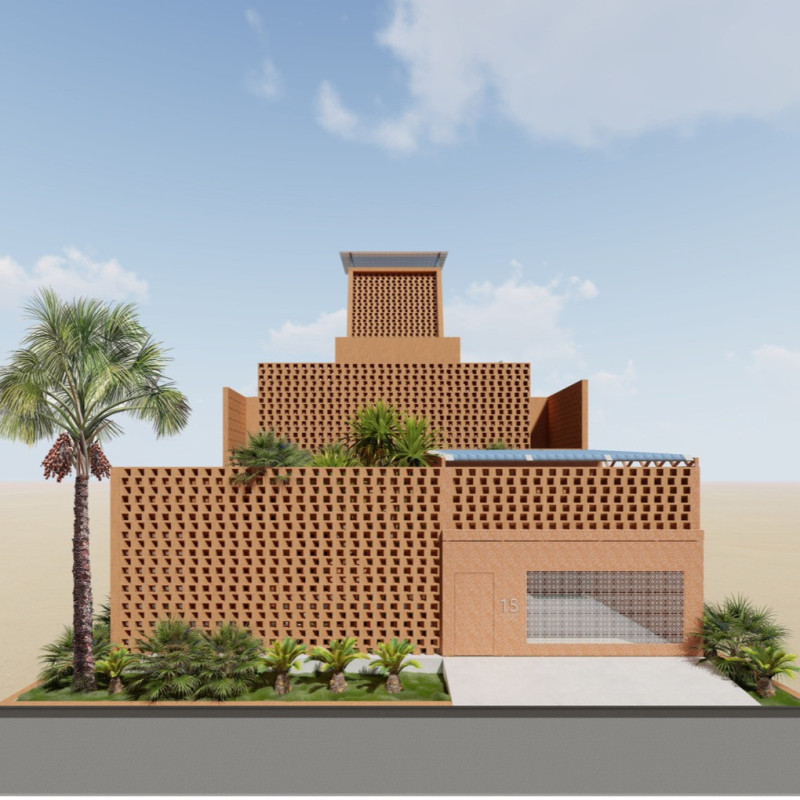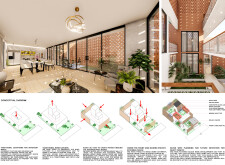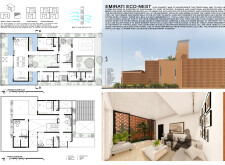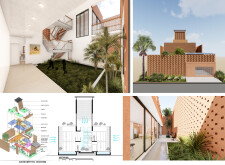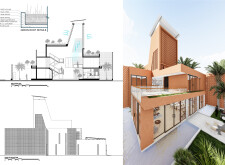5 key facts about this project
### Project Overview
Emirati Eco-Nest is a residential architecture project designed to address the challenges of living in a desert climate while incorporating sustainable features. Located in a region characterized by high temperatures, the project integrates traditional building concepts with modern materials and technological advancements. The design intent focuses on creating an environmentally responsive home that enhances natural cooling and maintains cultural significance in terms of privacy and community interaction.
### Spatial Organization and Environmental Strategy
The layout incorporates an introverted courtyard, serving as a central gathering space that fosters community while maintaining privacy. This configuration promotes an intimate atmosphere and encourages social interactions. A wind catcher has been strategically integrated to funnel cool air into the living spaces, thereby reducing reliance on mechanical cooling systems. The facade features a concrete block jali screen, designed for light transmission while preserving privacy, creating dynamic patterns of light and shadow throughout the interior.
### Material Selection and Sustainability
Material choices emphasize sustainability, durability, and local availability. The concrete block jali serves a dual purpose of facilitating air circulation and adding visual depth to the façade. Installation of solar panels enhances energy efficiency, promoting self-sufficiency in power consumption. The inclusion of a green roof not only mitigates heat island effects but also supports local biodiversity by integrating native plant species. Natural stone and plaster have been selected for interior finishes, ensuring a tactile connection to the environment while enhancing aesthetic appeal.


